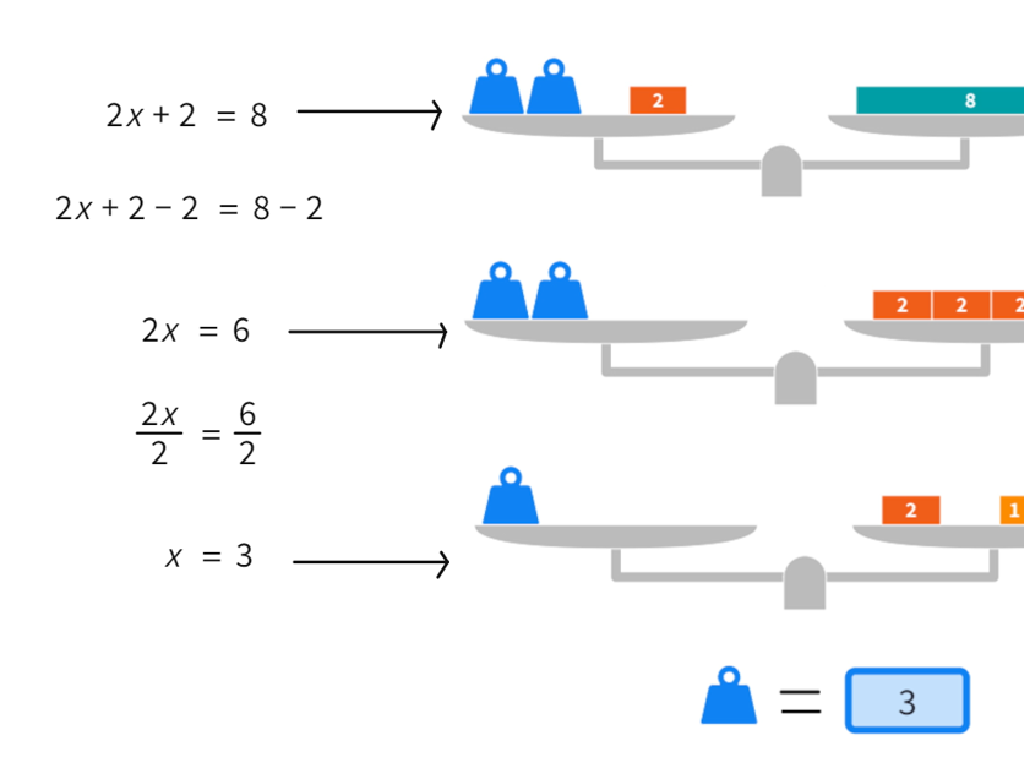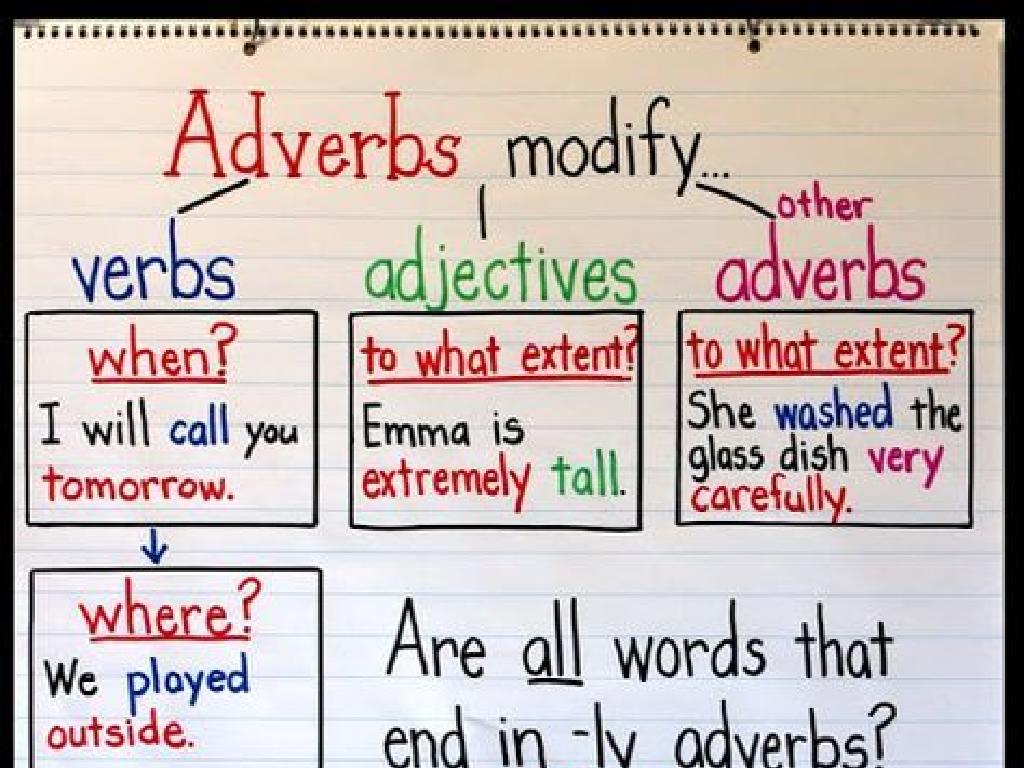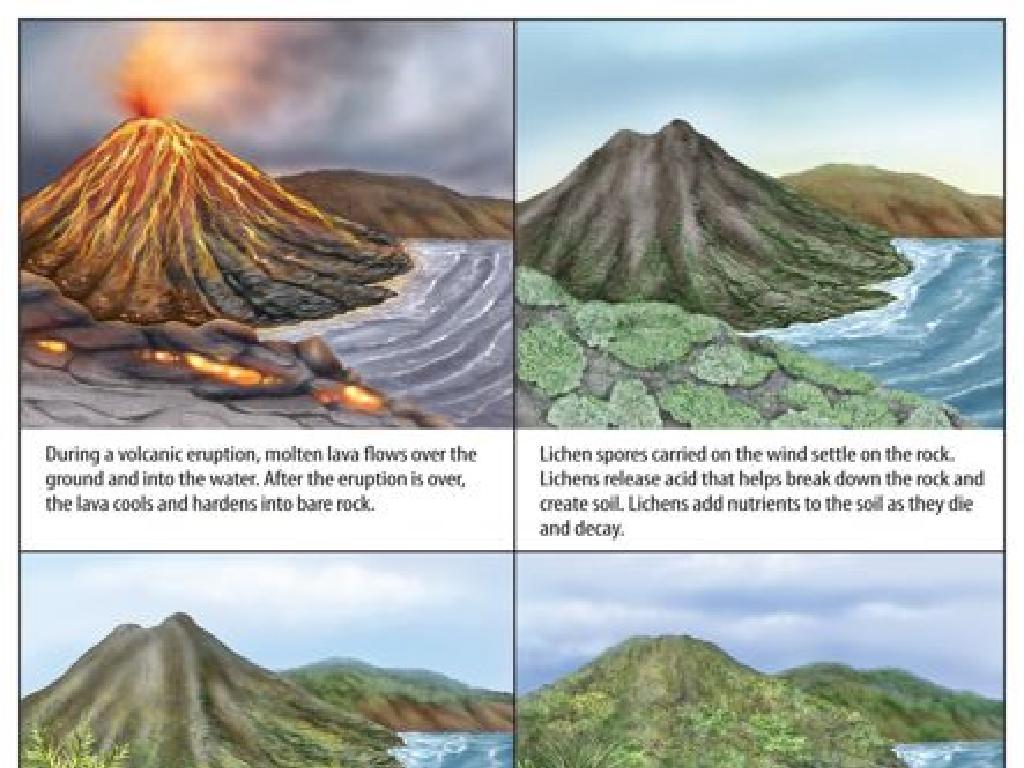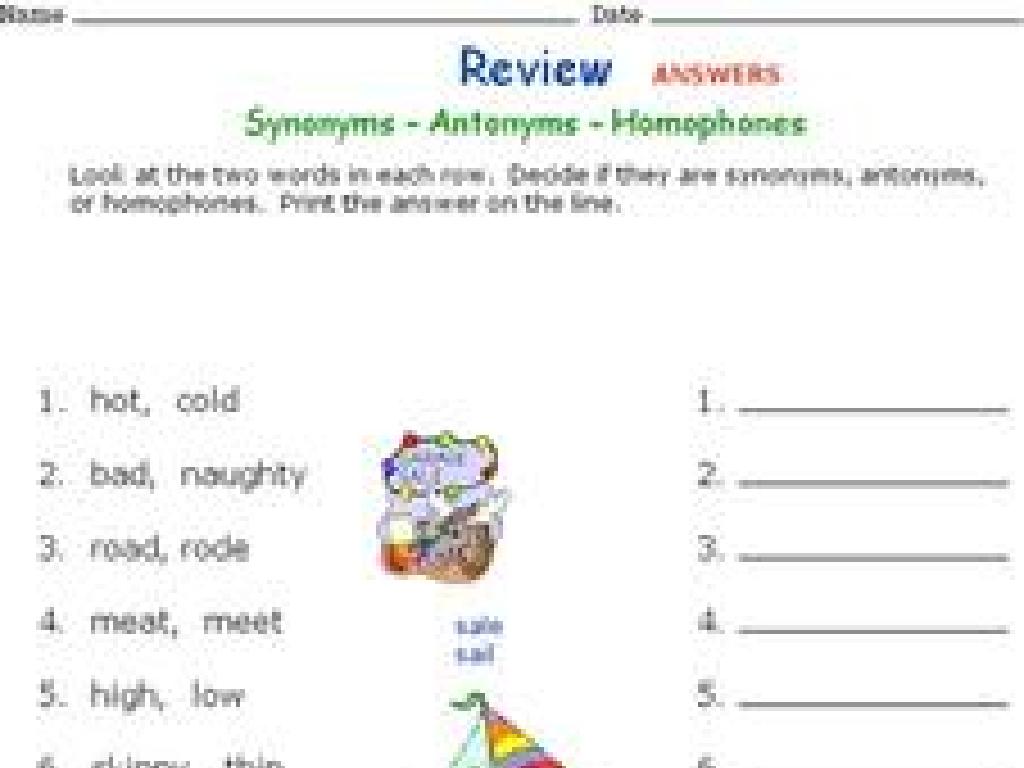How Do Air Masses Form?
Subject: Science
Grade: Eighth grade
Topic: Weather And Climate
Please LOG IN to download the presentation. Access is available to registered users only.
View More Content
How Do Air Masses Form?
– Air masses and the atmosphere
– Large bodies of air with uniform temperature and humidity
– Weather vs. Climate
– Weather is short-term, climate is long-term atmospheric conditions
– Formation of air masses
– Air masses form over large surfaces with consistent properties
– Characteristics of air masses
– They can be warm or cold, and moist or dry depending on their source region
|
This slide introduces the concept of air masses and their role in weather and climate. An air mass is a large body of air with uniform characteristics of temperature and humidity, which forms over large areas of land or water with consistent properties. The difference between weather and climate is also highlighted; weather refers to short-term changes in the atmosphere, while climate describes long-term patterns. Students should understand that the formation of air masses is crucial to weather patterns and that these masses can vary greatly, being categorized by their temperature and moisture content. Examples include continental polar (cold and dry) or maritime tropical (warm and moist) air masses. Discuss how these air masses can affect local weather when they move and interact with other air masses.
Understanding Weather and Air Masses
– Weather and climate distinction
– Weather is day-to-day atmospheric conditions, while climate is long-term patterns.
– Factors influencing weather
– Temperature, humidity, wind, and pressure affect weather.
– Air masses and weather patterns
– Large bodies of air with uniform temperature and humidity shape local weather.
– Significance of air mass formation
|
This slide introduces the concept of weather and its differentiation from climate, which is crucial for students to understand the study of meteorology. Weather refers to the short-term state of the atmosphere, including temperature, humidity, precipitation, and other factors, whereas climate describes the long-term average of weather over time. Students should learn about the various factors that influence weather, such as temperature, humidity, wind, and atmospheric pressure. The role of air masses, which are large bodies of air with consistent temperature and moisture levels, is central to the formation of weather patterns. Emphasize the importance of air mass formation in determining weather conditions and how they can lead to different weather phenomena when they interact with other air masses or geographical features.
Understanding Air Masses
– Define an air mass
– A large body of air with uniform temperature and humidity
– Characteristics of air masses
– They can be vast and cover millions of square miles
– Types based on temperature
– Classified as polar or tropical depending on temperature
– Types based on humidity
– Classified as maritime or continental depending on humidity
|
An air mass is a large volume of air that is mostly uniform in temperature and humidity. These air masses can span across millions of square miles and are a major factor in determining our weather. They are classified by their temperature and humidity characteristics: polar (cold) or tropical (warm), and maritime (wet) or continental (dry). Understanding these classifications helps meteorologists predict weather patterns and climate changes. In class, we’ll explore how these air masses form and how they can affect local weather conditions. Encourage students to think about the air masses that might affect their own region and the resulting weather they experience.
Formation of Air Masses
– Air masses form over land and sea
– Large bodies of air take on area’s temperature and humidity
– Earth’s surface impacts air mass traits
– Land heats/cools faster than sea, affecting stability and moisture
– Example: Continental Polar Air Mass
– Cold, dry air mass forms over northern land in winter
|
This slide introduces the concept of air mass formation, a fundamental topic in understanding weather and climate. Air masses are large bodies of air that acquire the characteristics of the land or sea surface over which they form. For instance, air over land tends to be drier and can change temperature rapidly, while air over the ocean is more humid and maintains a more constant temperature. An example of an air mass is the Continental Polar Air Mass, which forms over northern land areas during winter and is characterized by cold temperatures and low humidity. This concept is crucial for students to grasp as it sets the stage for understanding weather patterns and climate variations.
Air Masses and Weather Fronts
– Interactions of air masses
– When air masses meet, their distinct characteristics can cause weather phenomena.
– Defining weather fronts
– Boundaries separating air masses with different temperatures and humidity.
– Fronts’ impact on weather
– Fronts can lead to storms, clear skies, or temperature changes.
– Predicting weather changes
|
This slide introduces the concept of air masses and how their interaction leads to the formation of weather fronts, which are crucial in determining weather conditions. Emphasize that air masses are large bodies of air with uniform temperature and humidity, and when they collide, the boundary formed is known as a front. Different types of fronts (cold, warm, stationary, and occluded) have different effects on the weather, such as precipitation, cloud formation, and temperature changes. Encourage students to think about how the weather changes they experience are related to these fronts. Provide examples of weather patterns associated with each type of front to help students visualize the concepts.
Air Masses in Action
– Reading weather maps for air masses
– Identify different air masses by symbols and colors on a map.
– Case study: Air masses’ local impact
– Study how air masses affect temperature, precipitation, and wind in a region.
– Predicting weather with air mass data
– Use air mass characteristics to predict upcoming weather conditions.
– Meteorologists’ role in forecasting
– Understand how meteorologists analyze air mass information to forecast weather.
|
This slide aims to explain the practical applications of understanding air masses in meteorology. Students will learn how to read weather maps and identify different air masses using common symbols and color coding. A case study will provide insight into how air masses can dramatically alter local weather patterns, affecting temperature, precipitation, and wind. The slide will also cover how meteorologists use data about air masses to predict weather, including the tools and techniques they employ for accurate forecasting. Encourage students to think critically about the weather they experience and how it might be influenced by the movement of air masses.
Class Activity: Creating a Weather Map
– Analyze real-time weather data
– Plot air masses and fronts on a map
– Collaborate in groups
– Work together, share tasks, and discuss findings
– Present your weather forecast
– Explain your map and predicted weather to the class
|
This activity is designed to apply students’ knowledge of air masses and weather patterns by analyzing real-time data. Provide students with access to current weather data and a blank map. They will identify different air masses, high and low-pressure systems, and fronts, then plot these on their map. Encourage teamwork and discussion within groups to decide how to represent the information. After completing their maps, each group will present their weather forecast to the class, explaining the reasoning behind their predictions. This will help students understand the practical application of meteorological concepts. Possible variations of the activity could include comparing forecasts with actual weather outcomes, or having different groups focus on different regions.






